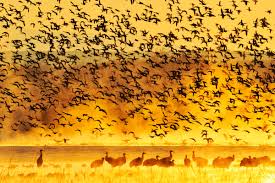
Breaking News
 Who Really Owns America (It's Not Who You Think)
Who Really Owns America (It's Not Who You Think)
 Canada Surrenders Control Of Future Health Crises To WHO With 'Pandemic Agreement': Report
Canada Surrenders Control Of Future Health Crises To WHO With 'Pandemic Agreement': Report
 Retina e-paper promises screens 'visually indistinguishable from reality'
Retina e-paper promises screens 'visually indistinguishable from reality'
 Unearthed photos of 'Egypt's Area 51' expose underground complex sealed off...
Unearthed photos of 'Egypt's Area 51' expose underground complex sealed off...
Top Tech News
 Future of Satellite of Direct to Cellphone
Future of Satellite of Direct to Cellphone
 Amazon goes nuclear with new modular reactor plant
Amazon goes nuclear with new modular reactor plant
 China Is Making 800-Mile EV Batteries. Here's Why America Can't Have Them
China Is Making 800-Mile EV Batteries. Here's Why America Can't Have Them
 China Innovates: Transforming Sand into Paper
China Innovates: Transforming Sand into Paper
 Millions Of America's Teens Are Being Seduced By AI Chatbots
Millions Of America's Teens Are Being Seduced By AI Chatbots
 Transhumanist Scientists Create Embryos From Skin Cells And Sperm
Transhumanist Scientists Create Embryos From Skin Cells And Sperm
 You've Never Seen Tech Like This
You've Never Seen Tech Like This
 Sodium-ion battery breakthrough: CATL's latest innovation allows for 300 mile EVs
Sodium-ion battery breakthrough: CATL's latest innovation allows for 300 mile EVs
 Defending Against Strained Grids, Army To Power US Bases With Micro-Nuke Reactors
Defending Against Strained Grids, Army To Power US Bases With Micro-Nuke Reactors
This animated globe showing animal migration routes is mesmerizing

Animals have don't need passports or visas, and they don't care about countries' borders — and that's vividly illustrated by this animated globe.
It shows migration routes for about 150 species based on tracking data shared by over 11,000 researchers from around the world. The pink lines follow the movement of animals covering at least 310 miles in one direction for at least 45 days, combining about 8,000 tracks collected over a period of about 10 years. You can see lines extend from Africa to Turkey, all the way up to Europe, as well as from Canada to the United States, and vice versa.
Tracking devices have been used by scientists for a long time to study how animals move within local regions and migrate across oceans and continents. In the past, scientists used to tie bands around birds' legs or use radio transmitters. Today, trackers and tags use GPS and satellites to record data down to the second. The information can help us understand how animals hunt, how they are responding to climate change, or habitat fragmentation — or even just why baby sharks hang out at LA beaches.

 SpaceX Heat Shield and Starship Mass Production
SpaceX Heat Shield and Starship Mass Production

